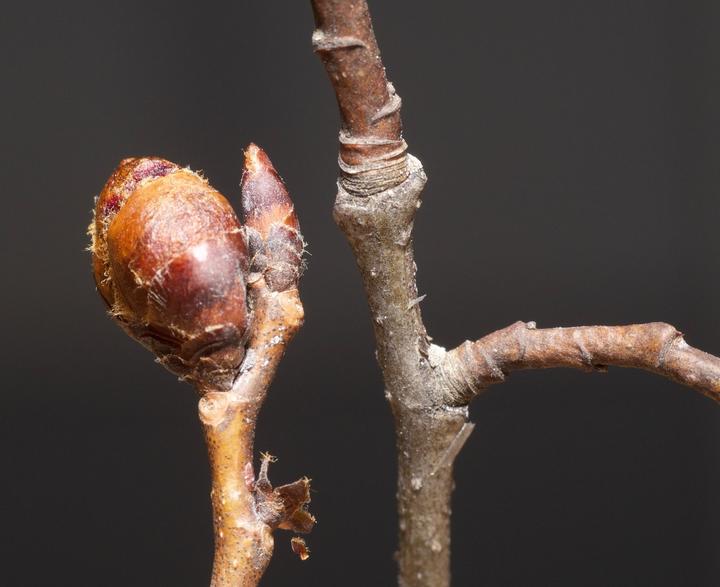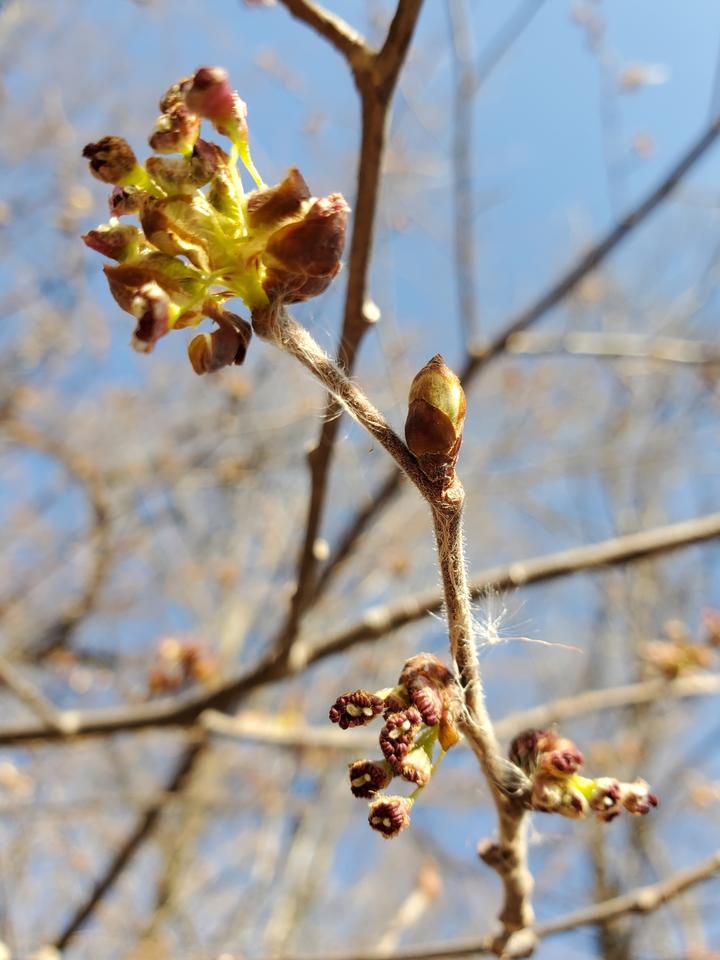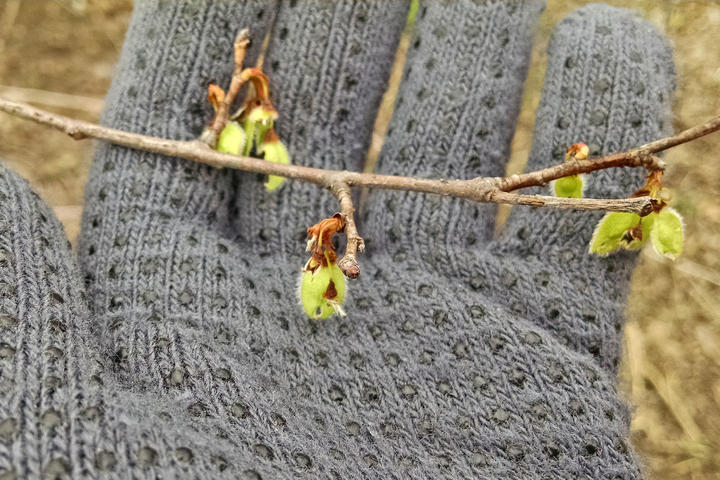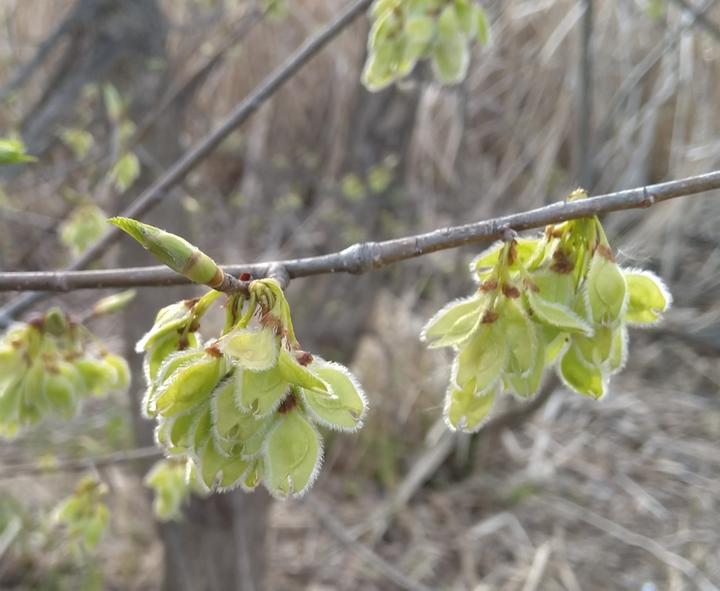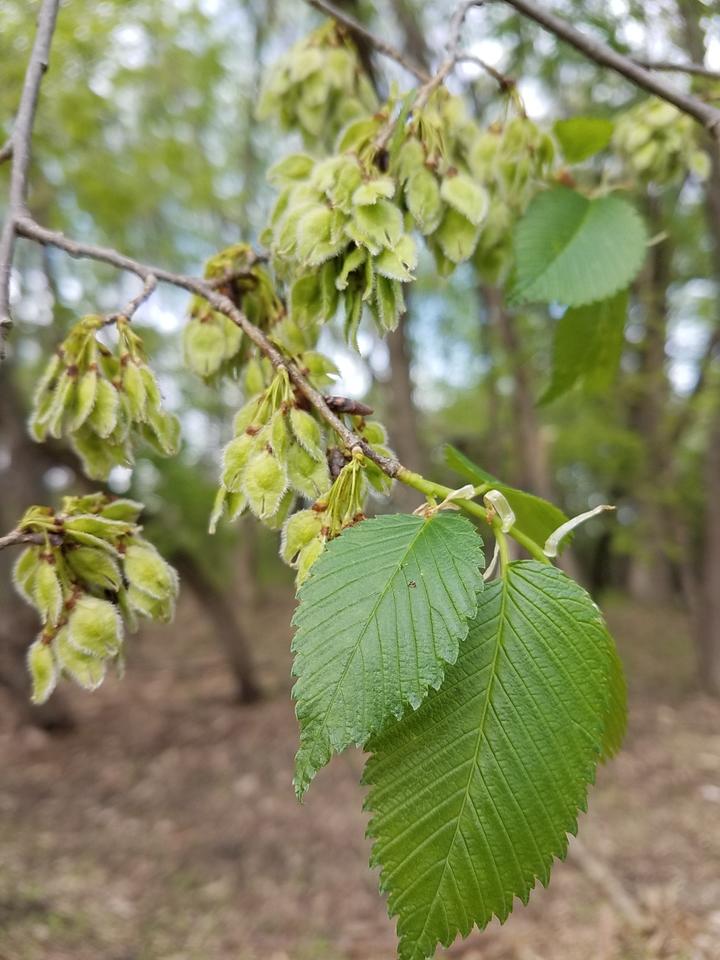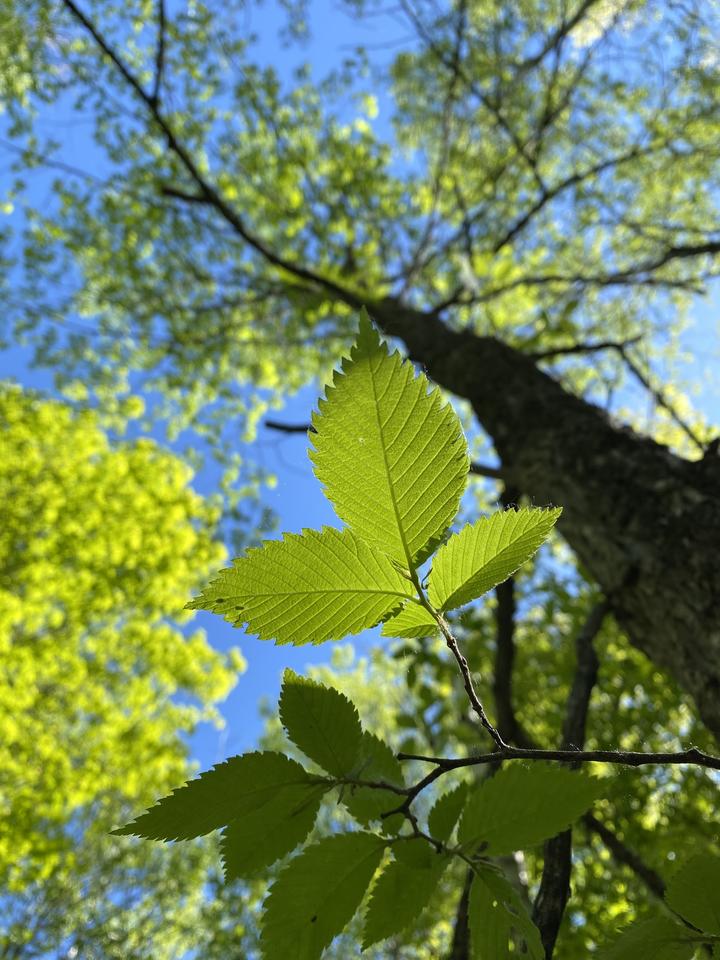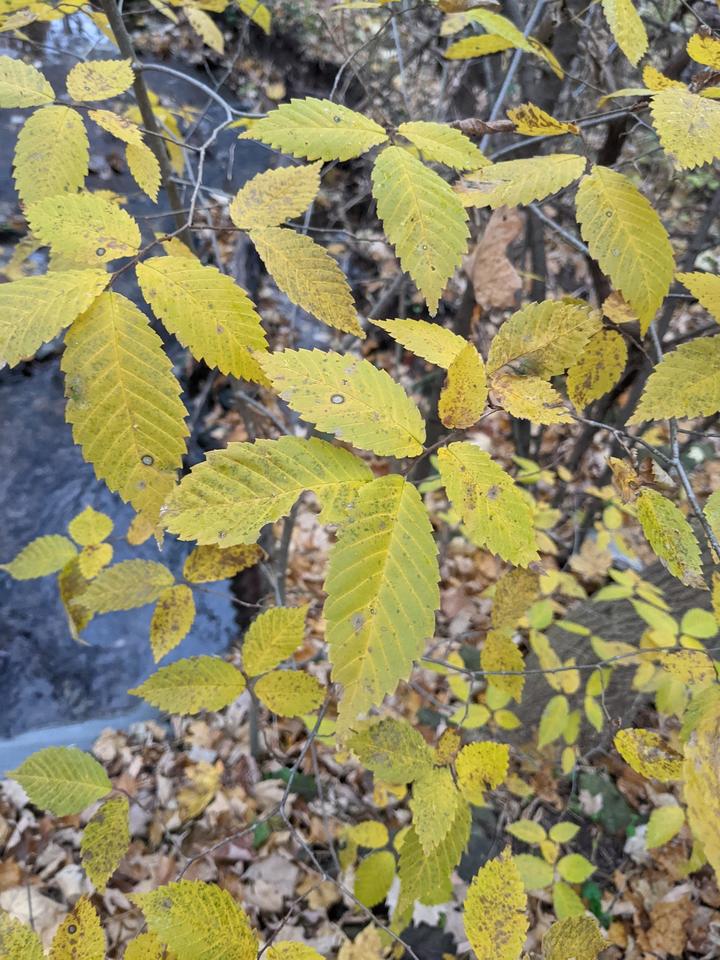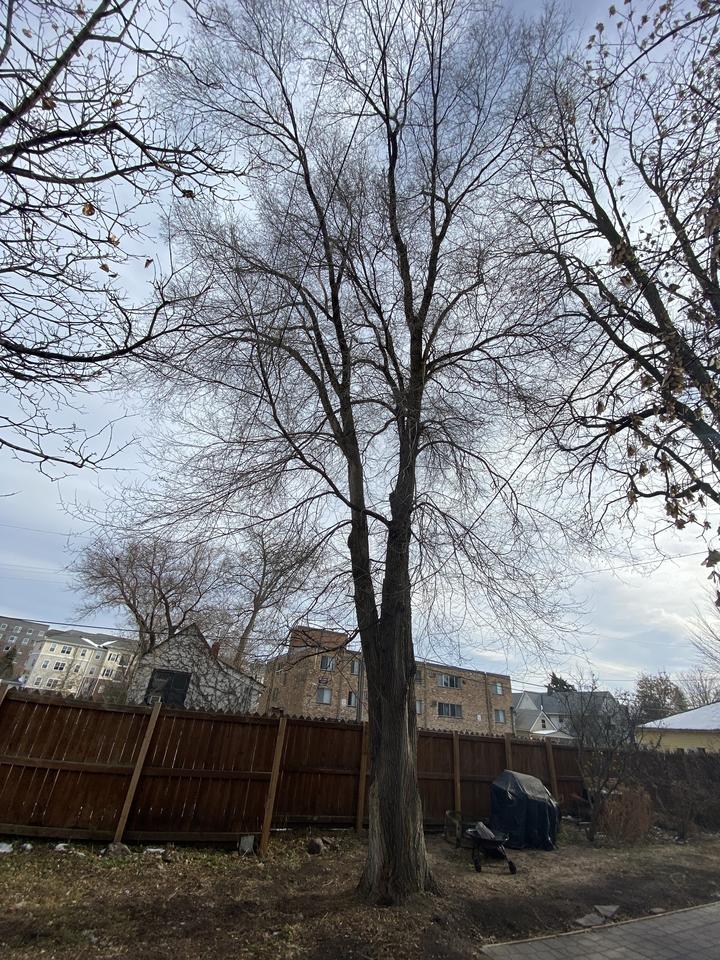More names for this tree
Anishinaabemowin: Aniib
Dakota: P'e
The Dakota and Anishinaabe were among the earliest people to name Minnesota’s plants and animals, as well as to understand them in relation to Minnesota’s climate and seasons. Those original names are still in use, and several are included on the Season Watch website.
Latin (or scientific name): Ulmus americana
The scientific community has a convention of assigning agreed-upon Latin names to every kind of organism. Using scientific names helps people communicate confidently about the same organism and organize lifeforms based on how closely related they are.
Page contents
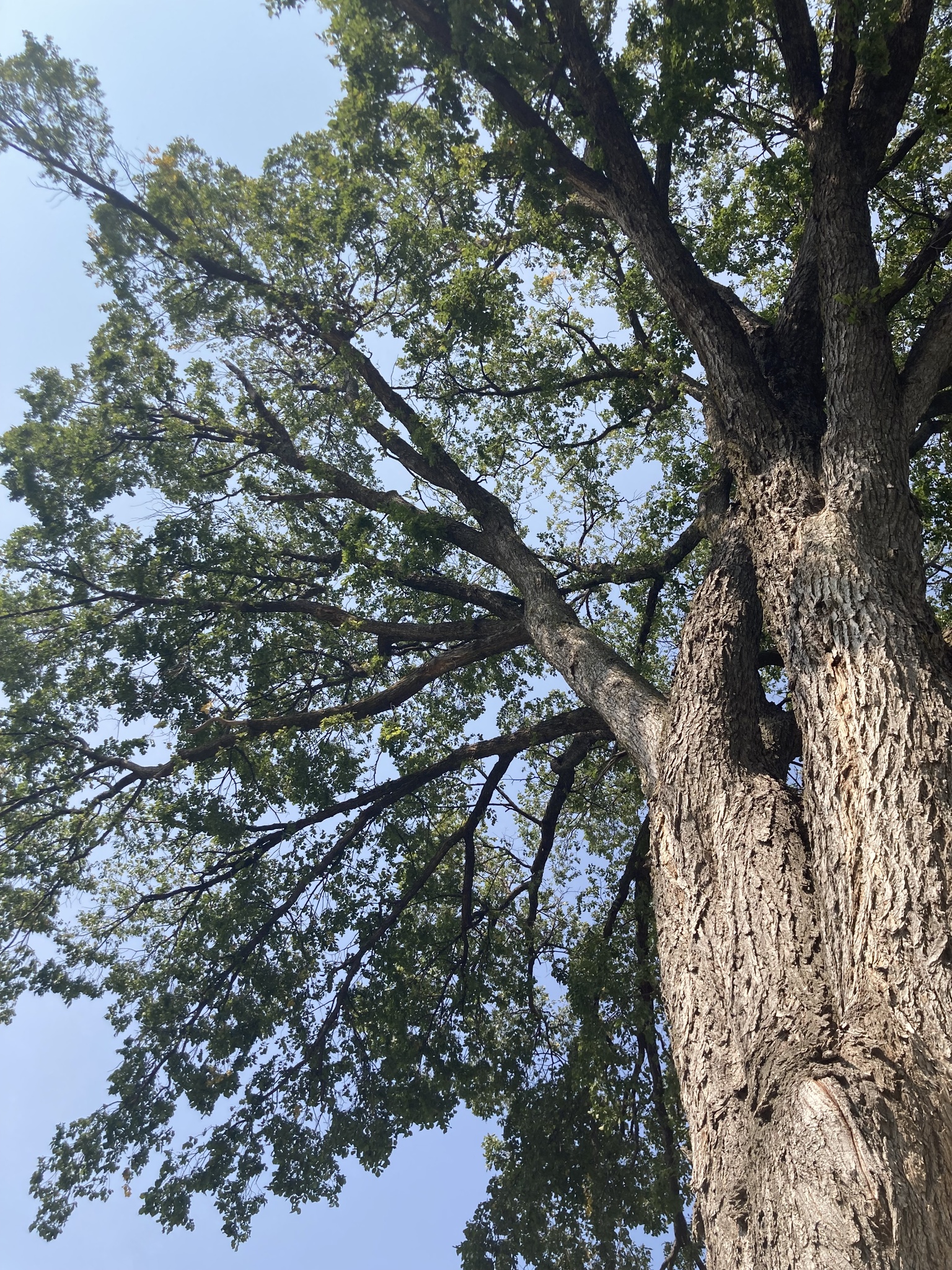
September 13, 2022, Ramsey County, Minnesota
Photo © Russo, some rights reserved (CC-BY-NC)
iNaturalist observation
About the American elm
- The American elm is a deciduous tree that grows throughout Minnesota. Individual trees can live up to 300 years.
- This tree can grow up to 125 feet tall, but typically grows fifty to seventy feet tall.
- The elm’s flowers, which have no petals, arrive in clusters in the early spring.
- Their ovate leaves have an uneven base and serrated margins. Every year, new leaves appear after flowers.
- In summer, elm fruits, called samaras, mature and turn from green to a papery brown.
- Elm leaves turn bright yellow in fall.
- Fun fact: Populations of American elms have been significantly hurt by Dutch elm disease.
Visual guide to elm phenology
Watch for the appearance of leaves, flowers, and fruits. Take notice of when flowers open and fruits ripen.
Note to observers
This page explains general clues to watch for when observing American elm phenology. However, this page does not instruct observers on how to identify this plant or collect data in a standardized way.
- For help with identification, see Minnesota Wildflowers.
- For guidance on collecting data, see Nature’s Notebook.
Graphs and historical data
Note: The Orientation Center provides a map, as well as information on reading graphs; interpreting summary statistics, who collected the data and how; and how to download datasets for independent exploration.
Flowering
- Earliest: March 20 (occurred in 1987)
- Average: April 12
- Latest: May 3 (occurred in 1950)
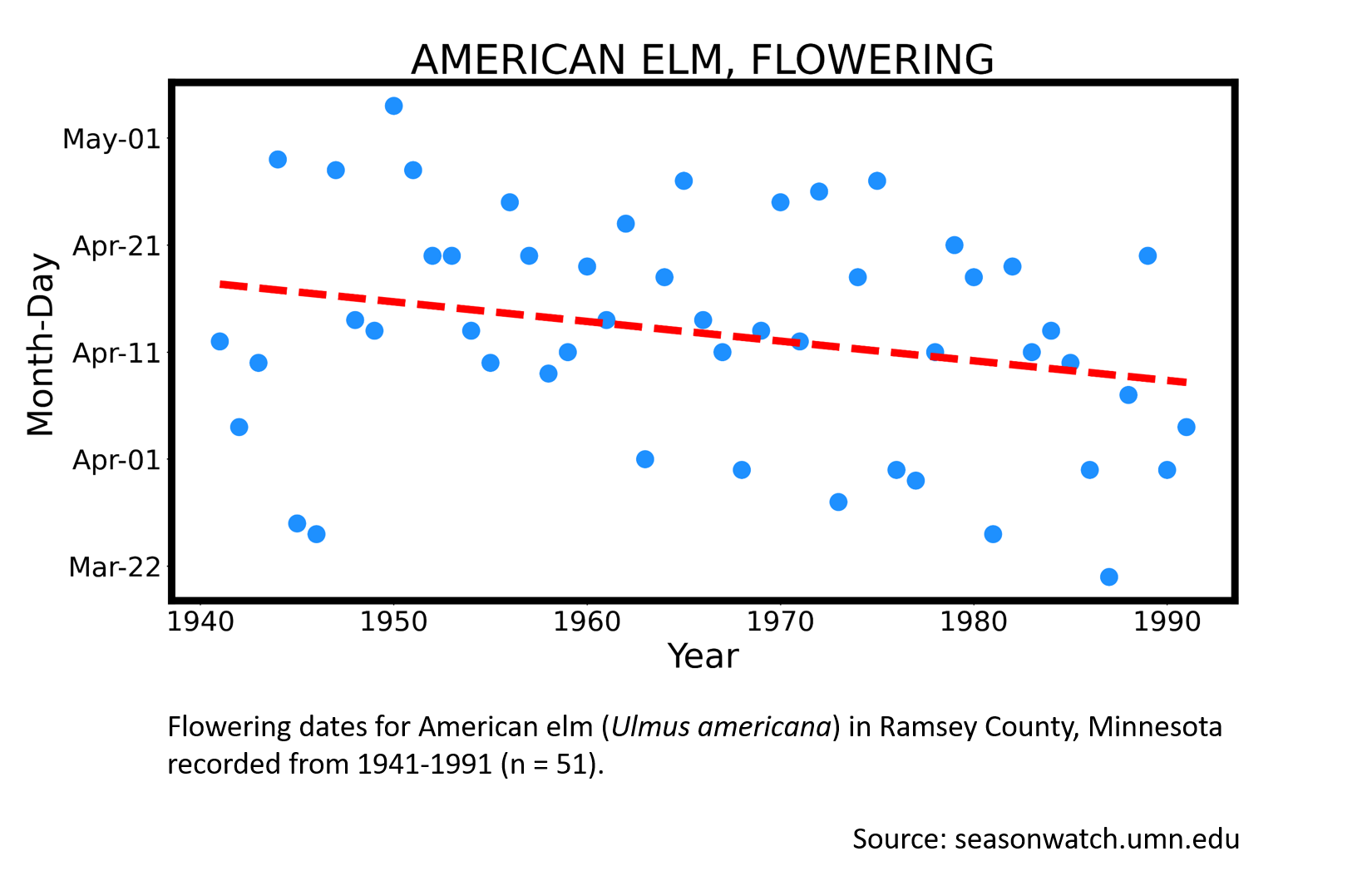
Leaf budbreak
- Earliest: April 10 (occurred in 1987)
- Average: April 27
- Latest: May 15 and 14 (occurred in 1950 and 1956)
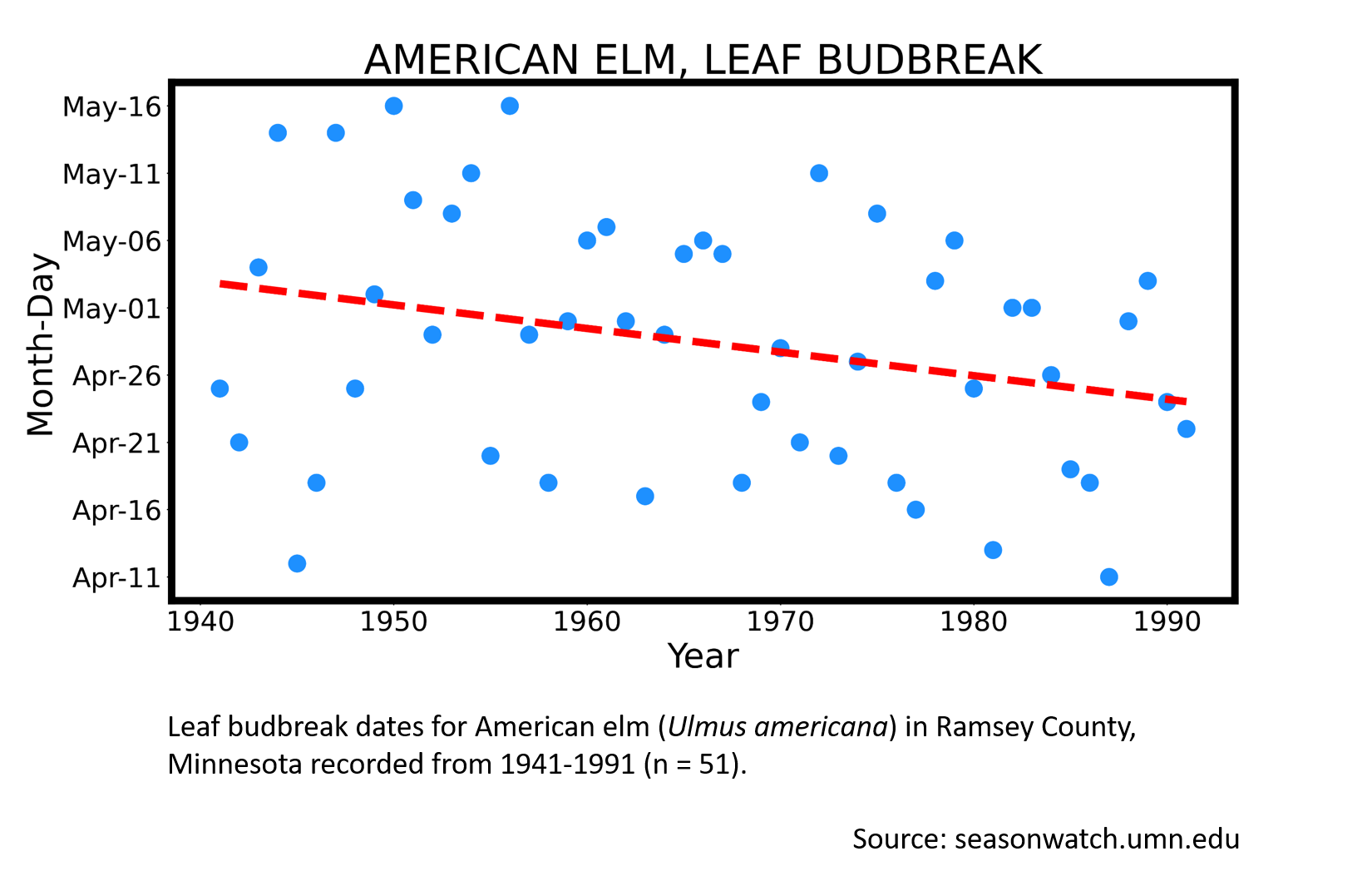
Keep exploring Season Watch
Keep exploring Season Watch
Co-author: Lynsey Nass, Minnesota Master Naturalist
